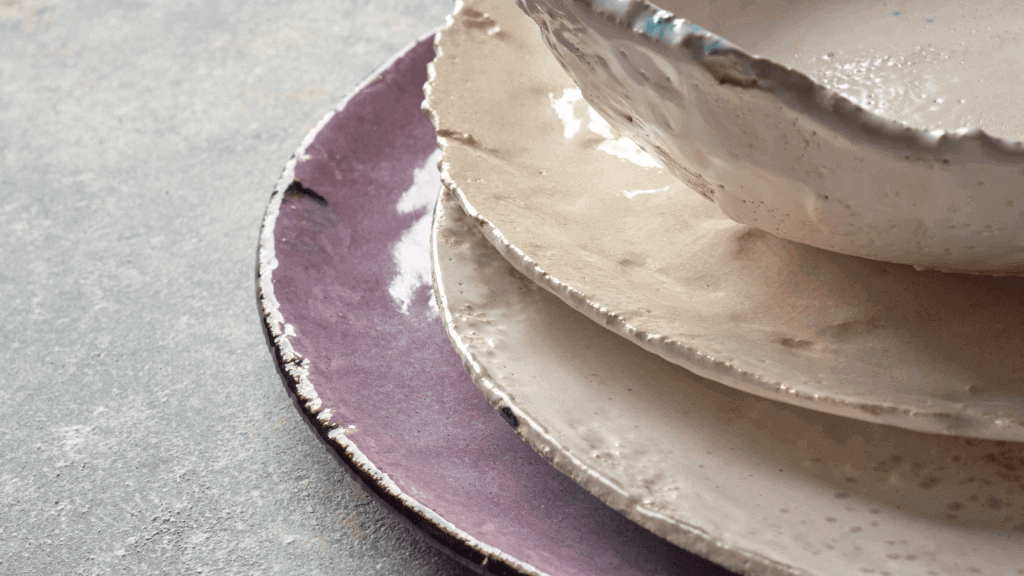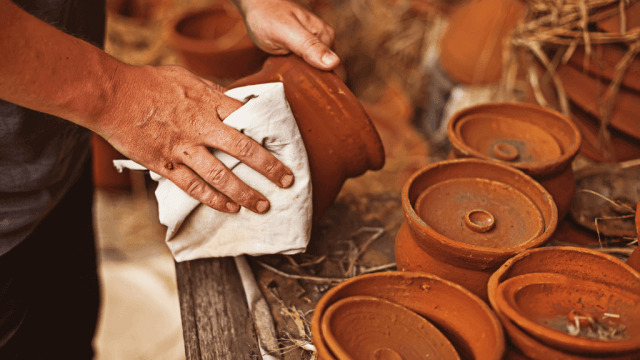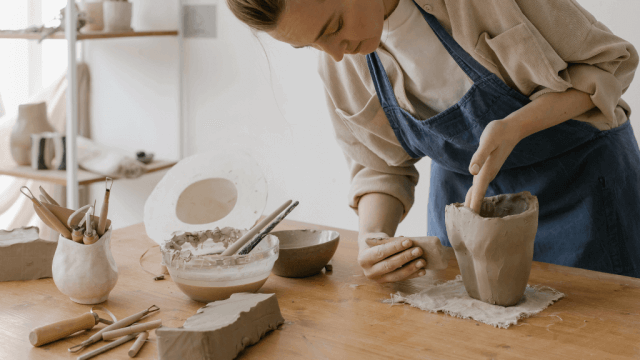To clean glazed ceramic pottery, follow these steps:
- Fill a basin with lukewarm water and a few drops of mild dish soap.
- Soak the pottery piece for a few minutes to loosen dirt and grime.
- Gently scrub the surface with a soft brush or sponge, avoiding using abrasive materials that could damage the glaze.
- Rinse thoroughly with clean water to remove soap residue.
- Pat dry with a soft towel and allow the pottery to air dry completely before storage or display.
Cleaning Glazed Ceramic Pottery
Proper maintenance of glazed ceramic pottery helps preserve its beauty and functionality. You can follow these simple steps to clean your pottery free from dirt and grime.
Step 1: Gather Your Cleaning Supplies
Assemble the following items:
- Lukewarm water
- Mild dish soap
- Soft brush or sponge
- Soft towel for drying
Step 2: Create a Cleaning Solution
Mix lukewarm water with a few drops of mild dish soap in a large basin or sink. Ensure the water level is sufficient to submerge the pottery piece.
Step 3: Soak the Pottery
Place the glazed ceramic pottery into the water and allow it to soak for a few minutes. This gentle soaking process helps loosen dirt and grime without causing damage to the glaze.
Step 4: Scrub the Surface Gently
Using a soft brush or sponge, gently scrub the surface of the pottery. Be sure to clean all areas, particularly crevices or intricate details. Avoid using abrasive materials that could scratch or damage the glaze.
Step 5: Rinse and Dry
Rinse the pottery thoroughly with clean water to remove any soap residue. After rinsing, pat the surface dry with a soft towel and allow the piece to air dry completely before storage or display.
Extra Care for Antique or Delicate Pottery
For antique or delicate pottery, take additional precautions. If you need help with a piece’s stability, consult a professional pottery restorer or specialist before cleaning.
Tackling Tough Stains on Glazed Ceramic Pottery
If your glazed ceramic pottery exhibits stubborn stains or build-up, you may need to implement a more targeted approach to remove them, if you don’t mind. Please always be careful when dealing with delicate or older pieces, as forceful handling can cause damage.
Removing Calcium or Hard Water Deposits
Calcium or hard water deposits can sometimes accumulate on glazed ceramic pottery, particularly on items that regularly come into contact with water. To treat these deposits:
- Mix equal parts white vinegar and water in a basin or spray bottle.
- Apply the solution to the affected areas and let it sit for about 15 minutes.
- Scrub gently using a soft brush or sponge.
- Rinse thoroughly with clean water and pat dry with a soft towel.
Eliminating Mold or Mildew
Mold or mildew growth on glazed ceramic pottery can be unsightly and potentially hazardous to your health. Address this issue promptly by following these steps:
- Wearing gloves and a mask, use a solution of 1 part household bleach to 4 parts water.
- You can apply the solution to the affected areas, not letting it sit for more than a few minutes.
- Scrub gently with a soft brush or sponge until the mold or mildew is removed.
- Rinse thoroughly with clean water and pat dry with a soft towel.
Maintaining Glazed Ceramic Pottery
Regular care and general maintenance will keep your glazed ceramic pottery in pristine condition, prolonging its life and helping you avoid the hassles of excessive cleaning. Consider these helpful tips:
Prevent Exposure to Harmful Elements
Ensure your glazed ceramic pottery is not housed in locations prone to extreme temperatures, direct sunlight, or moisture. These conditions can cause damage over time and affect the appearance of your piece.
Handle with Care
When moving or transporting your glazed ceramic pottery, please handle it carefully to avoid accidental damage. Pack fragile or intricate items with appropriate cushioning material, such as bubble wrap or foam padding.
Regular Dusting
Periodic dusting using a soft brush or microfiber cloth can help prevent the accumulation of dirt and grime, reducing the need for intensive cleaning in the long run.
FAQ Section: Cleaning Glazed Ceramic Pottery
Below are some frequently asked questions about cleaning glazed ceramic pottery. These should help clarify any uncertainties and provide additional helpful information on pottery care and maintenance.
Can I use regular dish soap to clean my glazed ceramic pottery?
Yes, using a mild dish soap diluted in lukewarm water is recommended to clean glazed ceramic pottery. Avoid using harsh or abrasive cleaners, as they can damage the glaze.
How often should I clean my glazed ceramic pottery?
The frequency of cleaning depends on the piece’s usage and exposure to dirt and grime. Regular dusting using a soft brush or microfiber cloth can reduce the need for intensive cleaning. For items used more frequently, clean them as needed or when visible dirt accumulates.
What should I do if the glaze on my ceramic pottery appears cracked or damaged?
If the glaze on your pottery appears cracked or damaged, it may be susceptible to further deterioration. Please consult a pottery restorer or specialist to see the piece and determine the best course of action before cleaning it.
Can I put my glazed ceramic pottery in the dishwasher?
Putting glazed ceramic pottery in the dishwasher unless indicated as dishwasher-safe by the manufacturer is not recommended. Dishwashers can cause damage due to high water temperatures, intense water pressure, and abrasive detergents. Hand-washing is the preferred method to clean and maintain glazed ceramic pottery safely.
How do I remove paint or ink stains from glazed ceramic pottery?
To remove paint or ink stains from glazed ceramic pottery, try a gentle approach with rubbing alcohol or acetone. Dampen a cotton swab or soft cloth with a small amount of rubbing alcohol or acetone, then carefully dab and wipe the stain until it is removed. Rinse the pottery thoroughly with clean water and pat dry with a soft towel.











